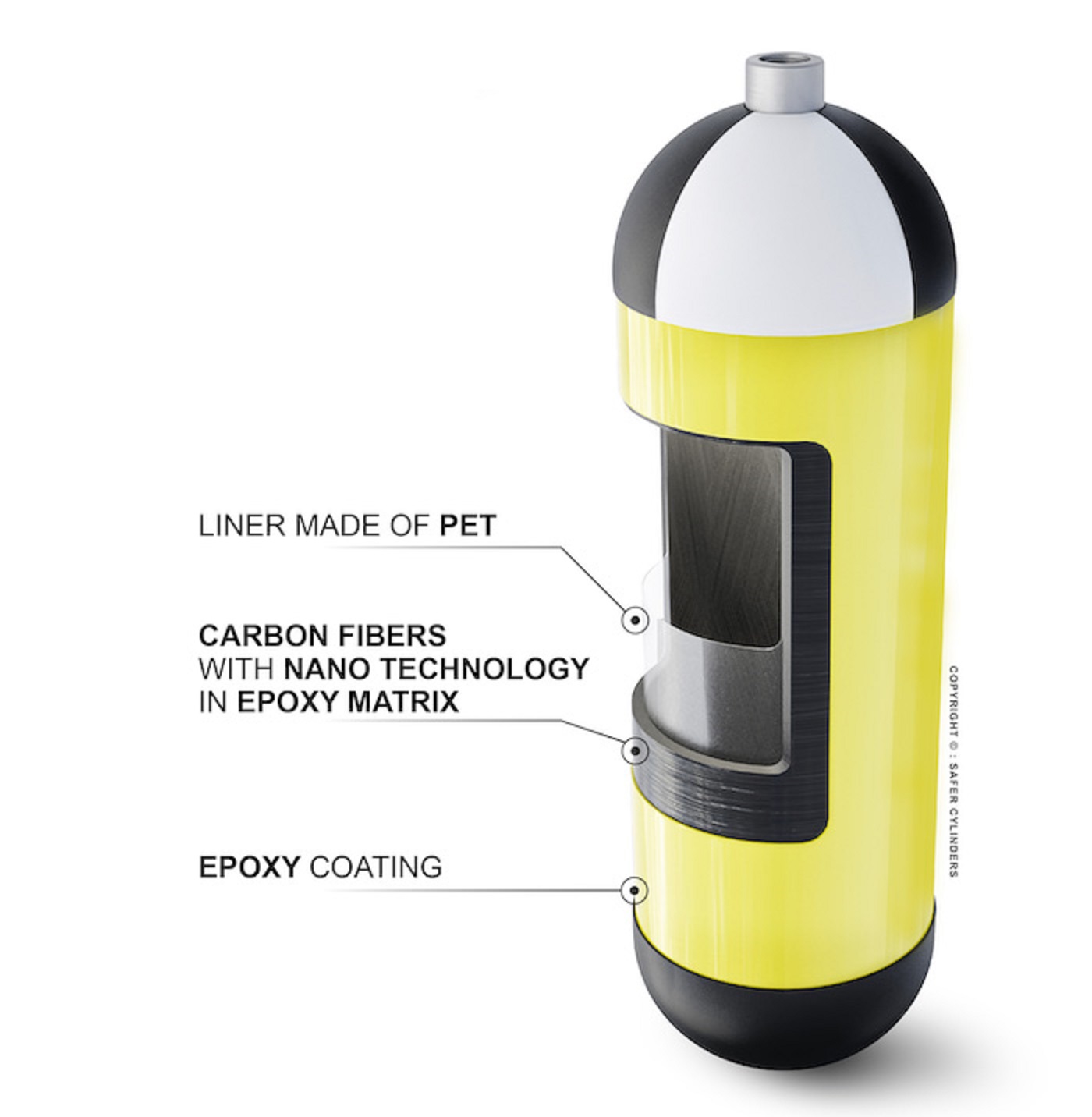
Engineers at Polish manufacturer Techplast have developed a way to reduce the weight of high-pressure cylinders used by firefighters.
Using graphene nanotubes, it could be possible to reduce the energy and fuel consumption in transportation and also meet targets to decrease the weight of compressed natural gas (CNG) or hydrogen storage systems for the automotive industry.
‘Graphene nanotubes introduced in composite reinforcement bring improvements in interlaminar shear strength (ILSS) leading to an increase in burst pressure level by up to 30%, according to the results of cylinder impact tests,’ said Piotr Saferna, R&D leader of Techplast. ‘This incredible improvement in impact resistance has allowed us to reduce the weight of the cylinder while maintaining the mechanical properties, which results in the lightest 6.8 liter cylinder in the world for 300 bars of working pressure. The total mass of our SAFERnano cylinder, including all protective attachments and coatings, is less than 2.8 kg. This new generation of cylinders achieves a weight reduction of up to 75% compared with competing solutions, and of 15% compared with our previous generation of products.’
The cylinders were made using TUBALL graphene nanotubes, produced by Luxembourg-based OCSiAl, the company said.
This story uses material from OCSiAl, with editorial changes made by Materials Today. The views expressed in this article do not necessarily represent those of Elsevier.



